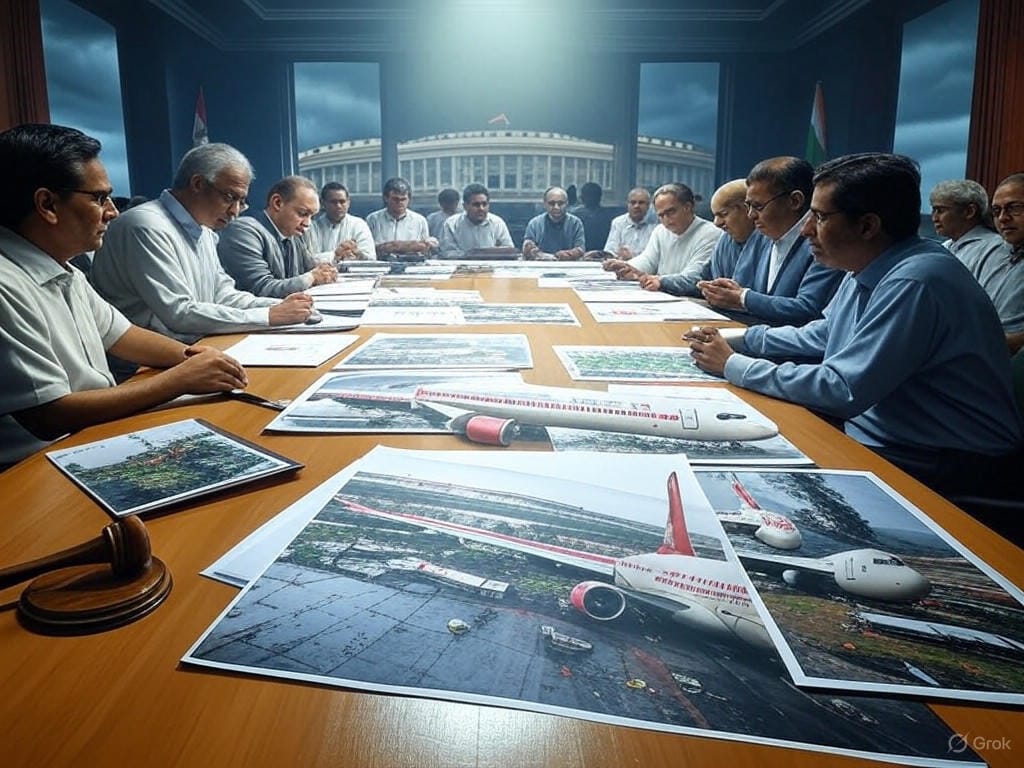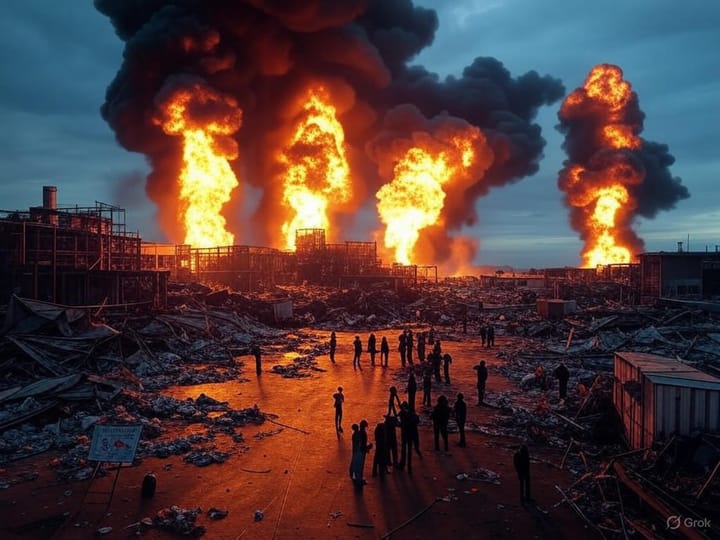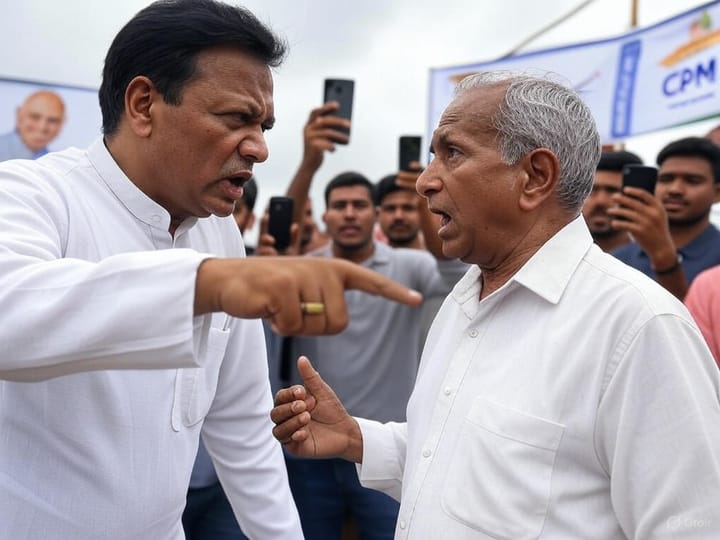Indian Parliament Launches Aviation Safety Review Following Air India Crash

The Indian Parliament convened a high-level aviation safety review panel today in response to the tragic Air India crash last month, which claimed over 180 lives. The panel, chaired by senior lawmakers across party lines, aims to scrutinize the state of aviation safety in India and propose urgent reforms to prevent future disasters. The session, held in the Parliament Annexe Building, saw testimonies from key stakeholders, including representatives from Air India, IndiGo, Air Traffic Control (ATC) officials, and airport operators. This development comes amid growing public concern over the safety of India’s rapidly expanding civil aviation sector.
A Tragic Catalyst for Reform
The devastating Air India crash on June 14, 2025, near Mumbai’s Chhatrapati Shivaji Maharaj International Airport, has shaken the nation. Preliminary reports suggest a combination of adverse weather conditions, potential technical failures, and human error may have contributed to the accident, though the Directorate General of Civil Aviation (DGCA) has yet to release its final findings. The Boeing 737 aircraft, operating a domestic flight from Delhi to Mumbai, skidded off the runway during landing, resulting in one of the deadliest aviation incidents in India in over a decade.
Prime Minister Narendra Modi, addressing the nation shortly after the crash, pledged a thorough investigation and vowed to implement stricter safety protocols. “The loss of lives in this tragedy is unacceptable. We will leave no stone unturned to ensure the safety of our skies,” he said. Today’s parliamentary panel session marks a significant step toward fulfilling that promise, with lawmakers emphasizing the need for systemic changes in India’s aviation infrastructure.
Panel Convenes with Key Stakeholders
The aviation safety review panel, comprising members of the Parliamentary Standing Committee on Transport, Tourism, and Culture, began its proceedings with a moment of silence for the victims of the Air India crash. Committee Chairperson, MP Rajesh Kapoor, underscored the urgency of the situation, stating, “India’s aviation sector is at a critical juncture. We must address lapses in safety protocols, training, and infrastructure to restore public confidence.”
The panel invited testimonies from a range of industry players to gain a comprehensive understanding of the challenges facing Indian aviation. Representatives from Air India, the state-owned carrier involved in the crash, faced intense scrutiny over their maintenance practices and crew training programs. Air India CEO, Priya Sharma, expressed deep regret over the incident and assured the panel of the airline’s full cooperation with ongoing investigations. “We are reviewing every aspect of our operations to ensure such a tragedy never occurs again,” Sharma stated, adding that the airline has already implemented additional safety audits and pilot training modules.
IndiGo, India’s largest private carrier, also provided insights into industry-wide safety practices. IndiGo’s Chief Operating Officer, Vikram Mehra, highlighted the need for better coordination between airlines, regulators, and airport authorities to address systemic issues such as runway safety and emergency response mechanisms. “Safety is a collective responsibility. We stand ready to collaborate with the government on any reforms needed,” Mehra told the panel.
Air Traffic Control officials, represented by the Airports Authority of India (AAI), faced questions regarding communication protocols and their role in managing high-traffic airports during adverse conditions. A senior ATC officer admitted that staffing shortages and outdated equipment at some airports pose significant challenges. “Modernizing our systems and increasing manpower are critical to ensuring real-time responsiveness,” the officer noted, urging the government to prioritize investments in air traffic management technology.
Airport operators, including private entities managing major hubs like Delhi and Mumbai, were also called to testify. They highlighted infrastructure constraints, such as runway congestion and inadequate emergency facilities, as key areas of concern. A spokesperson for GMR Airports, which operates Delhi’s Indira Gandhi International Airport, emphasized the need for public-private partnerships to fund upgrades. “We are committed to safety, but we need policy support and funding to match the pace of growth in air traffic,” the spokesperson said.
Broader Context of Civil Aviation Reforms
Today’s session is set against the backdrop of broader efforts to reform India’s civil aviation sector, which has witnessed exponential growth over the past decade. With over 150 million passengers annually and a fleet of more than 700 aircraft, India is one of the world’s fastest-growing aviation markets. However, this rapid expansion has exposed significant gaps in safety oversight, infrastructure development, and regulatory enforcement.
The government’s ambitious UDAN (Ude Desh ka Aam Nagrik) scheme, launched in 2016 to boost regional connectivity, has increased pressure on smaller airports, many of which lack the resources to handle modern aircraft or high passenger volumes. Additionally, the privatization of major airports and the entry of low-cost carriers have intensified competition, sometimes at the expense of safety standards, critics argue.
In recent years, the DGCA has faced criticism for its limited capacity to conduct regular audits and enforce compliance among airlines and airports. A 2023 report by the International Civil Aviation Organization (ICAO) ranked India below the global average in several safety oversight metrics, prompting calls for urgent action. The Air India crash has now brought these long-standing issues into sharp focus, with lawmakers and experts alike demanding a complete overhaul of the regulatory framework.
Civil Aviation Minister Jyotiraditya Scindia, who attended the panel session as an observer, reiterated the government’s commitment to reform. “We are working on a multi-pronged strategy that includes stricter regulations, technology upgrades, and capacity building for both personnel and infrastructure,” Scindia told reporters after the session. He also hinted at the possibility of introducing a new Aviation Safety Bill in the upcoming parliamentary session to address systemic deficiencies.
Public and Political Reactions
The convening of the aviation safety review panel has drawn mixed reactions from the public and political spectrum. Families of the victims of the Air India crash, many of whom gathered outside the Parliament building today, expressed hope that the panel’s findings would lead to meaningful change. “We lost our loved ones due to negligence. We want accountability and guarantees that this won’t happen to others,” said Anil Gupta, a relative of one of the victims.
Opposition parties, meanwhile, accused the government of reacting too late to a crisis that could have been prevented. “The government has been sitting on safety reports and warnings for years. How many more lives must be lost before they act?” questioned Congress MP Shashi Tharoor, a vocal critic of the government’s aviation policies.
Industry analysts, however, view the panel’s formation as a positive step toward addressing systemic issues. “This is a rare opportunity to bring all stakeholders together and create a roadmap for sustainable safety improvements,” said Kapil Kaul, CEO of CAPA India, an aviation consultancy. Kaul also stressed the importance of balancing growth with safety, warning that unchecked expansion could lead to more incidents if not accompanied by robust oversight.
Challenges and Path Ahead
As the panel continues its deliberations over the coming weeks, several challenges lie ahead. One major hurdle is the allocation of funds for safety upgrades, especially at smaller airports and for regulatory bodies like the DGCA. Lawmakers will also need to navigate the complex interplay of interests between airlines, airport operators, and government agencies to ensure that reforms are implemented effectively.
Another critical area of focus will be the adoption of international best practices. Experts have called for India to align more closely with ICAO standards, including mandatory safety management systems for airlines and airports, as well as regular independent audits. Enhancing pilot training and mental health support, particularly in the wake of high-stress environments, has also emerged as a priority.
The panel is expected to submit its preliminary report by the end of August 2025, with recommendations likely to shape the future of India’s aviation policy. For now, the nation watches closely as lawmakers grapple with the dual challenge of fostering growth in one of the world’s most promising aviation markets while ensuring that safety remains paramount.
Conclusion
The tragic Air India crash has served as a painful reminder of the vulnerabilities in India’s aviation ecosystem. Today’s parliamentary session marks the beginning of what many hope will be a transformative journey toward safer skies. As testimonies from Air India, IndiGo, ATC officials, and airport operators unfold, the focus remains on accountability, transparency, and actionable reform. With public trust at stake, the Indian Parliament’s aviation safety review panel carries the weight of a nation’s expectations, striving to ensure that such a tragedy never occurs again.
Note: This article is a fictional representation based on the given prompt and does not reflect real events or statements.





Comments ()